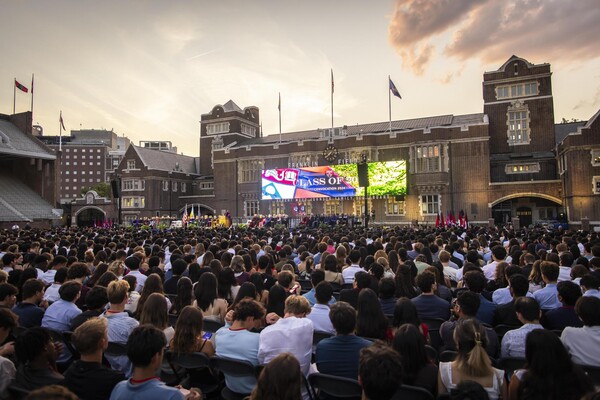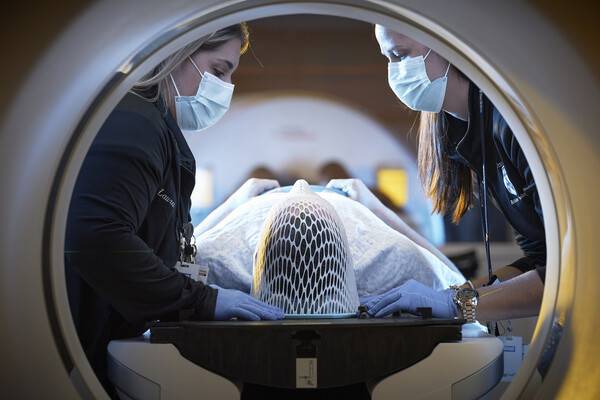A virtual Penn flourishes in Second Life
Second Life renditions of a virtual BioPond and Kelly Writers House at Penn.
Imagine a world where, instead of walking around Penn’s campus, you could fly like an eagle, or instead of merely observing the ducks and koi at the BioPond, you could dive in and swim with the fishes. What if you found out this world really does exist?
Not in real life, but in Second Life, a three-dimensional, online virtual world where users, through avatars, can socialize and interact.
In 2009, Deke Kassabian, senior technology director in the Office of Information Systems and Computing at Penn, and staff began building a virtual Penn campus in Second Life, including College Hall, Houston Hall, the Van Pelt-Dietrich Library Center, the BioPond and Kelly Writers House.
Second Life is similar to online games like World of Warcraft. But the difference, Kassabian says, is that virtual worlds in online games are controlled by the gaming companies, whereas in Second Life, organizations can create an environment for a specific purpose. If, for example, Mercedes-Benz wanted to promote its 2010 GLK350, they could create a Second Life world in which users could test drive the SUV. These days, many of the Ivies are using Second Life to promote their universities.
Kassabian says Second Life can be used in a variety of ways: as a traditional classroom experience, or as a high-tech academic “out-in-the-world kind of experience.”
For example, an avatar of Al Filreis, faculty director of Kelly Writers House, recently did a virtual poetry reading and analysis in the virtual Writers House. The real Filreis, while sitting at his computer, was able to converse with people in Philadelphia, Puerto Rico and Shanghai, China, using his avatar.
An example of an “out-in-the-world” experience might be found at the virtual BioPond. There are virtual ducks and koi fish in the pond, just like the original, but in Second Life there also are squid and other non-native species populating the pond. Because avatars do not need to breathe, users can simply dive in and study the organisms.
“You could see a biology professor using this space to bring a class together to talk about either the plant life or the fish life or invertebrates,” Kassabian explains.
The Penn Language Center recently requested a home in Second Life to meet with students. Because language is best taught through cultural immersion, Kassabian and his staff built a Japanese teahouse, a Persian courtyard, a Roman amphitheater and a Turkish coffeehouse for the Center.
Some of the Penn in Second Life buildings are nearly exact replicas of the originals, but others have been altered. “In the end, what you’re going for is the feeling of the building, not the exact recreation of the building,” Kassabian says.
Virtual Writers House looks very much like the real Writers House, for example. But, like the virtual BioPond, the Van Pelt Library in Second Life has been modified. “Having stacks of books is not a useful thing in a virtual world,” Kassabian says, adding that avatars wouldn’t pick up books to read them.
The ISC team has been exploring how virtual worlds such as Second Life can enhance the University’s mission, help with development, research in education and admissions. If a benefactor wanted to donate the wing of a new building, Kassabian says, the building could be constructed in Second Life, where the donor could preview it.
ISC has also been talking with Eric Furda, dean of admissions at Penn, about possible student visits to Penn through Second Life. “You could imagine if people wanted to visit campus or learn about campus, they could do it by visiting in person, on the web, or they could come to Second Life and they could look around the campus,” Kassabian says.
To view Penn in Second Life, you must first sign up and create an avatar at Secondlife.com, then search for “University of Pennsylvania.” The site works best with a high-speed internet connection.







